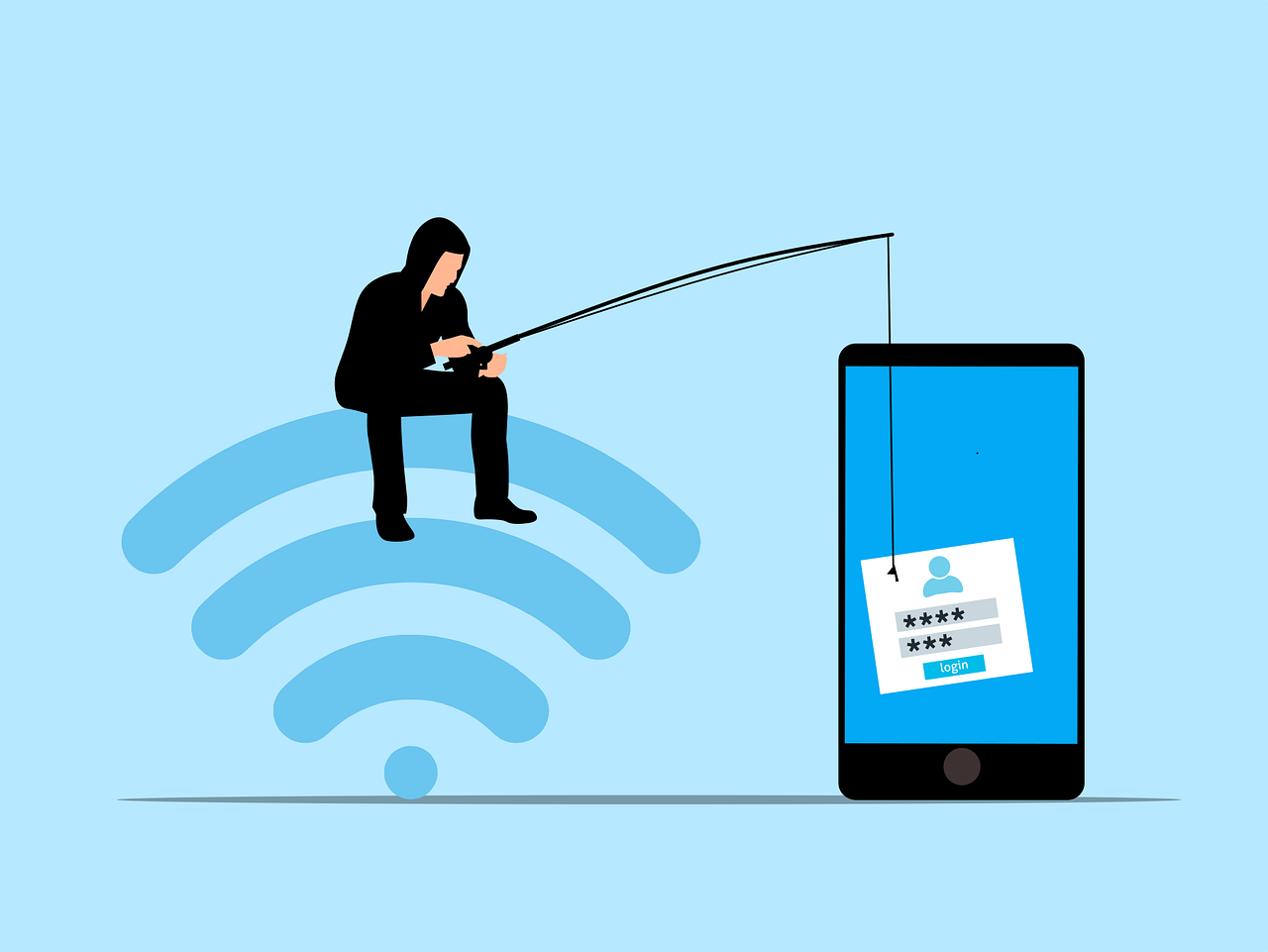
Of all the ways cybercriminals attack, Phishing remains at the top of the list year after year. However, it also continues to evolve every year. Now, with AI, it's more dangerous than ever. Phishing 2.0 is here. It’s smarter, more convincing, and harder to detect. Understanding this new threat is crucial. Check with the cybersecurity experts on your IT Services team – they know.
Here's a wake-up call: A recent study found a 60% increase in AI-driven phishing attack. It was always serious, but now it’s worse. Here’s how AI is amplifying phishing and what you can do to protect yourself.
The History of Phishing
Phishing arose from humble beginnings. Back when AOL was the big thing, attackers used email worm programs to send out spoofed emails to PayPal customers. Those customers were led to spoofed sites and asked to update their credit card details and other identifying information, and the crooks hoped someone would take the bait.
These emails were often crude, used poor grammar and obvious lies were common. Many people could spot them easily, but like P.T. Barnum once said, “There’s a sucker born every minute.”
The fundamental methodology of phishing is still the same, but the tactics have become much more sophisticated – even the spelling and grammar have improved. Attackers now use AI to improve their tactics. AI helps them craft convincing messages and helps them target specific individuals. This makes phishing more effective.
How can AI be used in phishing?
It Creates More Realistic Messages
AI can analyze huge amounts of data, which it uses to study how people write and speak. This helps it create realistic phishing messages. These messages sound like they come from a real person – often sounding like the person or entity that you believe sent the email. They mimic the tone and style of legitimate communications, making these scams harder to spot.
AI Helps Personalize Attacks
AI gathers information from social media and other sources and uses this information to create personalized messages. These messages mention details about your life. They might reference your job, hobbies, recent activities, or even your dog or cat. This personalization increases the chances that you'll believe the message is real.
More Accurate Spear Phishing
Spear phishing is simply a more targeted type of attack, going after specific individuals or organizations. It's more sophisticated than regular phishing. AI makes spear phishing even more dangerous. It helps attackers research their targets in depth, crafting highly tailored messages. These messages are hard to distinguish from legitimate ones.
AI Automates Phishing
With Ais help, it’s easy to automate many aspects of phishing. It can send out thousands of phishing messages quickly. It can also adapt messages based on responses. If someone clicks a link but doesn’t enter information, AI can send a follow-up email. This persistence increases the likelihood of success.
Deepfakes
AI is crucial in the development of a Deepfake, creating realistic but fake videos and audio. Attackers can use deepfakes in phishing attacks. For example, they might create a video of a CEO asking for sensitive information. This adds a new layer of deception. It makes phishing even more convincing.
The Impact of AI-Enhancing Phishing
Higher Success Rates
Think of the difference between a shotgun which sends shot pellets over a wide area, and a sniper rifle with a scope that sends a single bullet downrange to the exact chosen target. AI makes phishing more effective because it seems real, causing more people to fall for these sophisticated attacks. This leads to more data breaches. Individuals face identity theft and other issues. Companies lose money – and some go belly-up.
Detection Becomes More Difficult
Traditional phishing detection methods struggle against AI-enhanced attacks. Spam filters may not catch them. Employees may not recognize them as threats. This makes it easier for attackers to succeed.
It Can Cause Greater Damage
AI-enhanced phishing can cause more damage. Personalized attacks can lead to significant data breaches. Attackers can gain access to sensitive information. They can also disrupt operations. The consequences can be severe.
What protects from phishing?
Be Skeptical
Well-trained users develop a healthy scepticism of unsolicited messages, even when they appear to come from a trusted source. Verify the sender’s identity. Don’t click on links or download attachments from unknown or unverified sources – that makes the attack successful.
Look for Logical Red Flags
Are there any red flags in these suspicious emails? These might include generic greetings, urgent language, or requests for sensitive information. Be cautious if the email seems too good to be true.
Multi-Factor Authentication (MFA)!!!
You’ve heard IT Support LA repeat this recommendation over, and over, and over. MFA adds an extra layer of security. Even if an attacker gets your password, they’ll need another form of verification. This makes it harder for them to access your accounts.
Regular, ongoing Security Awareness Training teaches your workforce to spot even the newest phishing tactics. Stay informed about the latest threats. Share this knowledge with others. Training can help people recognize and avoid phishing attacks.
Your IT Support can’t protect alone in a vacuum – whether you have an internal IT services department or an outsourced Managed Services Provider (MS). Your employees are your weakest link, but they are also your first line of defense. Make them strong and capable and encourage the flow of communication between them and your IT support.
Verify Before you Trust
Never provide sensitive information via email. If you receive a request, verify it through a separate communication channel. Don’t click a link or dial a number provided in the email. Contact the person directly using a known phone number or email address.
Get Advanced Security Tools
Advanced security tools are well worth the money, so make the investment. Anti-phishing software can help detect and block phishing attempts. Email filters can screen out suspicious messages. Keep your security software patched and up to date.
Incident Response Plan (IRP)
Establish the steps that must be taken after an attack – the IRP. Any incident involving a cyber threat needs to be reported immediately phishing to your IT services team or email provider. This helps them improve their cybersecurity measures. It also helps protect others from similar attacks.
Use Email Authentication Protocols
Further protection against email spoofing is enabling authentication protocols like SPF, DKIM, and DMARC. Ensure these protocols are enabled for your domain. This adds an extra layer of security to your emails.
Ongoing Security Audits
Nothing in cybersecurity ever remains static, so you need to conduct regular security audits. This helps identify vulnerabilities in your systems. Addressing these vulnerabilities can prevent phishing attacks.
Frequently Asked Questions
What can AI actually do?
It can do more every day. The specific actions Artificial Intelligence (AI) can perform are vast and expanding. Fundamentally, AI makes it possible for machines to learn from experience, adjust to new inputs and perform human-like tasks.
Is AI a real danger?
It’s only as dangerous as we are foolish. Developing AI with honesty and without supporting an ‘agenda’ should subvert any potential peril. Are we going to allow AI to take control of our nuclear arsenal? Are you crazy? Hopefully, the designers and developers have seen ‘The Terminator’ and will take severe steps to avoid ‘Skynet’ from becoming self-aware.
While there is an existential danger inherent in using AI, that risk is philosophical or sociological, rather than in the cinematic apocalyptic sense. AI in its current form can alter the way people view themselves. It can degrade abilities and experiences that people consider essential to being human.
Do you remember the 1960 movie ‘The Time Machine?’ With AI machines performing all our work, will we become listless and unmotivated like the Eloi, waiting to be spoon-fed to the Morlocks? Probably not, but it may well rearrange our society into a class or caste system if we are not watchful.
What are some examples of phishing?
The most common example is when the sender requests or entices you to perform a specific action:
Clicking an attachment
Enabling macros in a word document
Updating or confirming a password
Using a new Wi-Fi hot spot
Responding to a social media connection request
How do you know if you have malware?
You will know right away if it’s Ransomware: your screen will lock up and a popup window will demand a ransom. Indications of other infections are:
System crashes
Computer slows - becomes sluggish
A barrage of unwanted ads
Loss of disk space
Browser settings/home page are suddenly changed
Increased internet activity
Loss of access to files/applications
Antivirus turns off
How secure is your network?
As a reputable member of the IT Support Los Angeles community since 2002, IT Support LA offers a FREE, no-risk network and cybersecurity assessment. It is a non-intrusive scan that allows us to deliver a comprehensive report that is yours to keep. No strings, and no obligation to ever use our Managed IT Services.
The best defenses are expert cybersecurity to protect your data from theft, and a top-notch Managed Services Provider (MSP) to ensure continued reliability and defenses against newly emerging threats.
With our 100% Money Back Guarantee in writing, we offer a risk-free way for prospective clients to try us out. Because we do not require a ‘hard’ contract, our clients can fire us at any time with 30 days’ notice. We have to be good.
Among the Managed IT services we provide:
IT HelpDesk Service
Onsite IT Support
Cybersecurity
Cloud migration and management
Email migration services
Backup and disaster recovery
VoIP phone systems
IT disposition and recycling
Office moves
White label services (IT to IT)
IT Support LA is an award-winning Managed Services Provider (MSP):
o 3 Years awarded Best IT by the Small Business Expo
o Awarded 2nd best company of any type in the US by the Small Business Expo SB100
o Awarded Best IT Support in California by Channel Futures
o Winner of Best IT in Los Angeles by Channel Futures
o Listed as one of the world’s Top 501 MSPs by CRN and in the top 250 in the ‘Pioneer’ listing
o 4 years listed as one of the Top 501 MSPs in the World by Channel Futures
o Listed as #21 MSPs in the World in Channel Futures NextGen 101
o Globee 2021 Bronze Award winner for Chief Technology Officer of the Year
o Globee 2022 Gold Award winner for Chief Technology Officer of the Year
o Named one of 2022’s 50 ‘Best’ businesses in California by UpCity
o Named Best of IT winner by UpCity
o Winner of Local Excellence Award for 2021, 2022 and 2023 by UpCity
o Named Best of Cloud Consulting winner by UpCity
o Certified as Top MSP and Cybersecurity Pro by UpCity
o Named Best IT in Los Angeles by Expertise.com.
Need Help with Safeguards Against Phishing 2.0?
Phishing 2.0 is a serious threat. AI amplifies the danger, making attacks more convincing and harder to detect. Have you had an email security review lately? Maybe it’s time.
Contact us today to schedule a chat about phishing safety and take advantage of our FREE no-risk network and cybersecurity assessment, just fill out the form on this page or call us at:
818-805-0909


